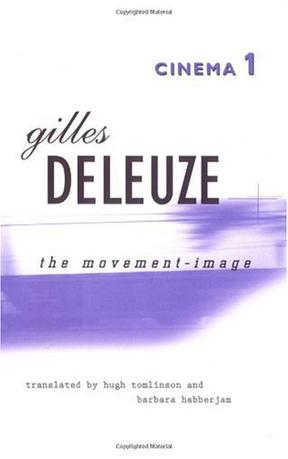-

艺术家的责任
很长时间以来,艺术家对自己的艺术作品及行为不解释、不负责,而这种不负责任的行为并非没有造成一定的后果,这正是《艺术家的责任》一书要讨论的问题。现代艺术先锋派从哪里获得了豁免权,乃至于让它远离评判,摆脱“有用性”的逻辑,甚或避免向共同体投入的义务?艺术家难道是不负任何责任的人吗? 这种豁免权与先锋派一个世纪以来被赋予的特权有关,因为先锋派曾被认为代表了进步与革命。让•克莱尔用富有历史性的分析表明,先锋派不仅以极左与极右的政治乌托邦为原型打造自己,反过来也为其提供了基本信条。先锋派和此类乌托邦同样具有暴力性,同样仇恨传统文化,且自60年代以来最终将反人道主义确立为行动的纲领。 本书重新勾勒了一种堕落的历史谱系。有关当代艺术的本质及其评判标准,争论甚至是论战,历时已久。在一个“去责任化的世界”,艺术家是否应该比寻常人承担更多的责任?作者强调 “我”与“他者”的“面对面”伦理关系,这或许能够引发我们的深思。 -

单身者舞会
本书是布迪厄生前编写的最后一部民族社会学著作,2002年3月,在其逝世后一个月,本书于巴黎正式出版。全书由布迪厄的三篇论文构成,围绕法国农村中愈加普遍的长子单身现象,分别写作于其学术生涯的不同时期。布迪厄指出,这三篇文章的汇集,清晰地反映了其社会学理论发展的逻辑轨迹。从对贝亚恩农村社会的田野考察,到与结构主义方法的决裂,以及对于在一个统一的婚姻市场中的象征资本和习性的分析,本书给予了我们一种社会学和人类学的视角和洞察力,来看待职业、社会阶层和婚姻之间的互动,以及它们对于一个小型社会的影响。舞会散场,单身者三三两两,逐渐离去。最终,布迪厄用一种小说家的眼光和敏锐,向我们描述了20世纪法国传统农业社会的危机和崩溃。 -

小哲学家系列(全三册)
是为幼儿量身定做的第一套“哲学”绘本。 小主人公菲尔,经常有很多奇怪的问题,他的小伙伴佐福也不知道答案,菲尔的爸爸妈妈太忙了,没有时间解答他的问题。然后,正如所有冒险故事所描绘的那样,菲尔和佐福开始了寻找答案的旅程…… 本套绘本的画风童趣可爱,文字生动活泼,还帮助幼儿第一次接触了简单的哲学概念。 -

法国社会理论
本书纵览法国社会理论,起自法国大革命余波(圣西门、巴札尔与孔德),直至克里斯蒂娃、德勒兹、布迪厄和布希亚主导的当代景观,颇有新意。书中将法国社会理论划分为三个内在逻辑一致的周期:1800-1880(社会学的最初发展);1880-1940(古典社会学与现代人类学之诞生);1940-2000(马克思主义社会理论的发展),每一周期都体现出从世俗思想朝宗教思想的演变轨迹;融合法国历史跌宕起伏的社会政治背景,讨论了一系列个体与思想流派的核心方法和研究,挑战了有关法国社会思想的传统观点。 -

知识分子的背叛
20世纪的论述知识分子的论述知识分子问题的名著——1927年初版的朱利安·本达《知识分子的背叛》。 本达把知识分子规定为古代宗教中的圣职者,也就是那种脱离世俗社会,追求形而上的学问,追求终级的真理的圣职者,从更广义的词义的来看,还是决定人类命运的“预言家”。这部著作深受欢迎,1939年,二战爆发那年,重印达39次,广为流传,为欧洲当年最畅销书之一。战后,1946年、1959年和1975年在法国此书又数度再版,分别被翻译成英文、德文、意大利文、日文等文字。 -

Cinema 1
First published in France in 1983, this is at once a revolutionary work in philosophy and a book about cinema. For Deleuze, philosophy cannot be a reflection of something else; philosophical concepts are, rather, the images of thought, to be understood on their own terms. Here he puts this view of philosophy to work in understanding the concepts-or images-of film. Cinema, to Deleuze, is not a language that requires probing and interpretation, a search for hidden meanings; it can be understood directly, as a composition of images and signs, pre-verbal in nature. Thus he offers a powerful alternative to the psychoanalytic and semiological approaches that have dominated film studies. Drawing upon Henri Bergson's thesis on perception and C. S. Peirce's classification of images and signs, Deleuze is able to put forth a new theory and taxonomy of the image, which he then applies to concrete examples from the work of a diverse group of filmmakers—Griffith, Eisenstein, Pasolini, Rohmer, Bresson, Dreyer, Stroheim, Buñuel, and many others. Because he finds movement to be the primary characteristic of cinema in the first half of the twentieth century, he devotes this first volume to that aspect of film. In the years since World War II, time has come to dominate film; that shift, and the signs and images associated with it, are addressed in Cinema 2: The Time-Image. "The appearance of [this book] is an exciting event for film study and one that well deserves serious attention and commentary." —Film Quarterly